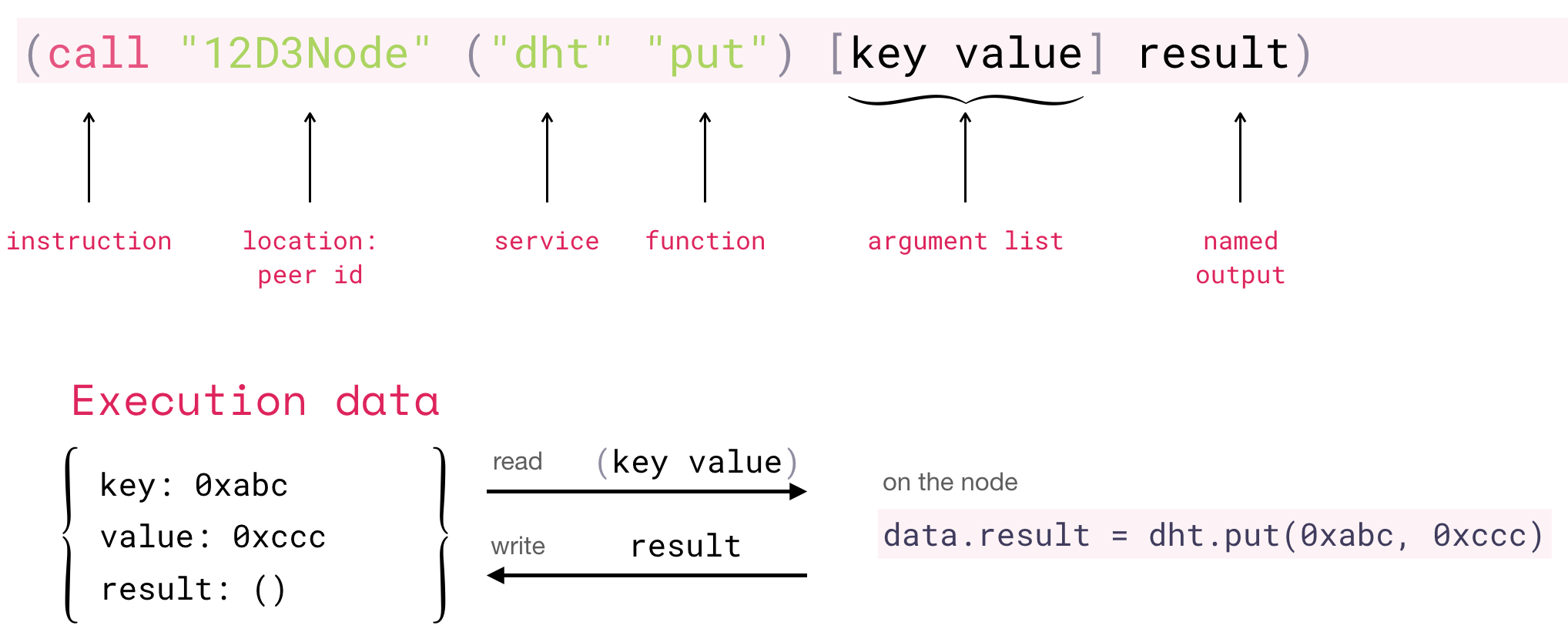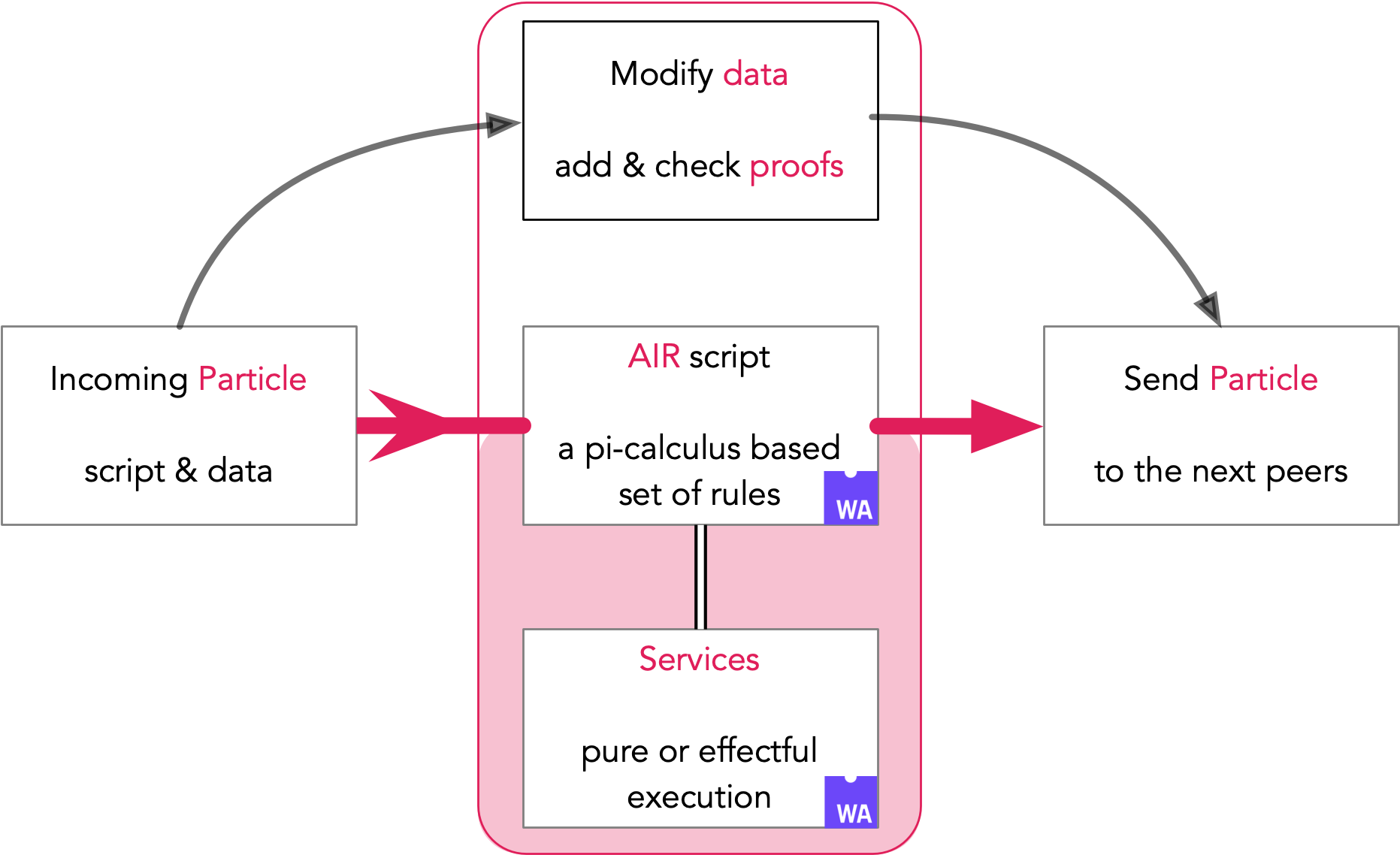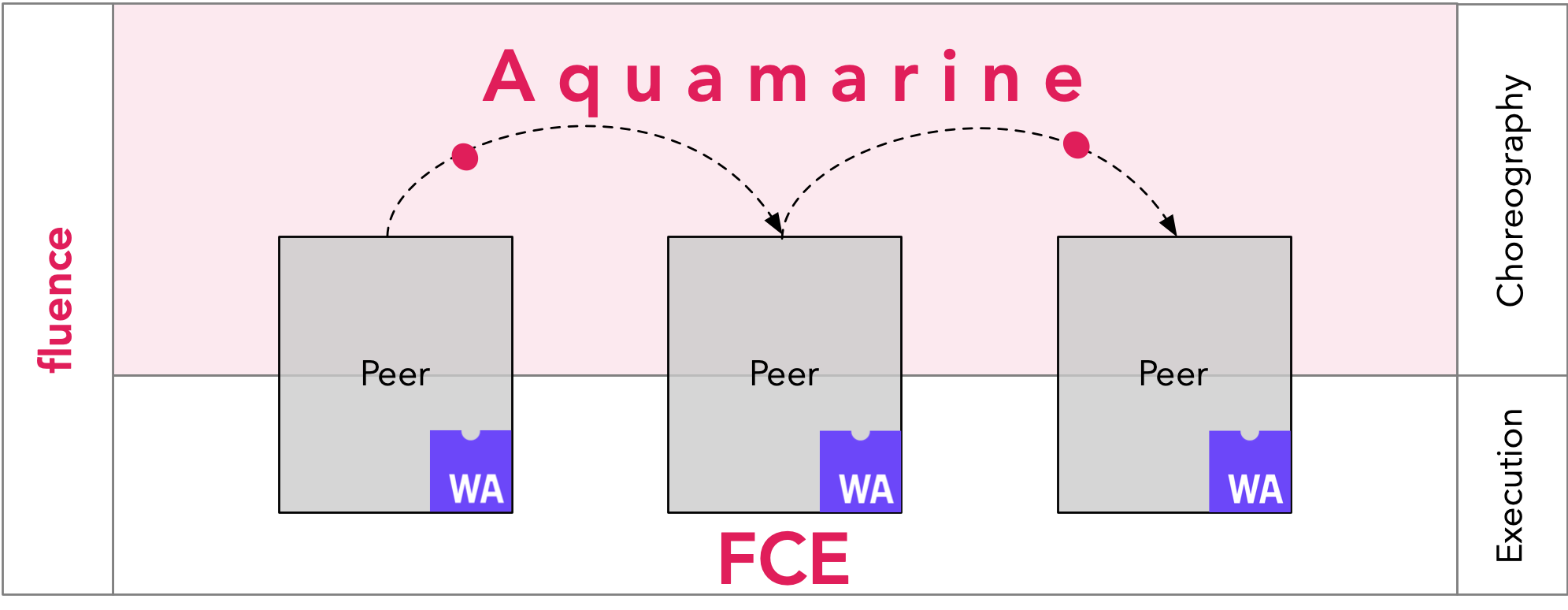mirror of
https://github.com/fluencelabs/aquavm
synced 2024-12-04 23:20:18 +00:00
| .cargo | ||
| .circleci | ||
| .github/workflows | ||
| air | ||
| air-interpreter | ||
| avm | ||
| crates | ||
| docs | ||
| images | ||
| .gitignore | ||
| Cargo.lock | ||
| Cargo.toml | ||
| CHANGELOG.md | ||
| Config.toml | ||
| LICENSE | ||
| next-hardfork-changes.md | ||
| README.md | ||
Aquamarine
- composability medium
- allows developers to express network choreography in a script
- moves script & data from peer to peer in a single-use logical network with checking merkle proofs and signatures.
Fluence stack
Fluence nodes uses AIR to coordinate requests between different services run by Marine:
Aquamarine Intermediate Representation
AIR: What is it?
- S-expression-based low-level language
- Controls Fluence network and its peers
- Inspired by WAT (WebAssembly Text Format)
- Meant to be a compile target
- Development meant to happen in a higher-level language
- Syntax is in flux, will change
Scripts written in AIR look like this:

- Gather chat members by calling chat.members
- Iterate through elements in members array, m = element
- Each m is an object, represented as array; [0] is the first field
(next m)triggers next iteration
AIR: Instructions
call: execution

callcommands the execution- moves execution to a peer, specified by
location - peer is expected to have specified WASM
service - the
servicemust have specifiedfunctionavailable to be called argument listis given to thefunction- result of the
functionis saved and available underoutput name - example call could be thought of as
data.result = dht.put(key, value)
seq: sequential

seqtakes two instructions- executes them sequentially
par: parallel

partakes two instructions- executes them in parallel
fold: iteration

foldtakes an array, a variable and an instruction- iterates through the array, assigning each element to the variable
- on each iteration instruction is executed
- instruction can read the variable
nexttriggers next iteration
xor: branching & error handling

xortakes two instructions- iff first instruction fails, second one is executed
null

nulltakes no arguments- does nothing, useful for code generation



